Related Research Articles

"Snow White" is a German fairy tale, first written down in the early 19th century. The Brothers Grimm published it in 1812 in the first edition of their collection Grimms' Fairy Tales, numbered as Tale 53. The original German title was Sneewittchen; the modern spelling is Schneewittchen. The Grimms completed their final revision of the story in 1854, which can be found in the 1857 version of Grimms' Fairy Tales.

"Hansel and Gretel" is a German fairy tale collected by the Brothers Grimm and published in 1812 as part of Grimms' Fairy Tales. It is also known as Little Step Brother and Little Step Sister.

Dutch cuisine is formed from the cooking traditions and practices of the Netherlands. The country's cuisine is shaped by its location on the fertile Rhine–Meuse–Scheldt delta at the North Sea, giving rise to fishing, farming, and overseas trade. Due to the availability of water and flat grassland, the Dutch diet contains many dairy products such as butter and cheese. The court of the Burgundian Netherlands enriched the cuisine of the elite in the Low Countries in the 15th and 16th century, so did in the 17th and 18th century colonial trade, when the Dutch ruled the spice trade, played a pivotal role in the global spread of coffee, and started the modern era of chocolate, by developing the Dutch process chocolate.

"The Twelve Dancing Princesses" is a German fairy tale collected by the Brothers Grimm and published in Grimm's Fairy Tales in 1815. It is of Aarne-Thompson type 306.

"The Fisherman and His Wife" is a German fairy tale collected by the Brothers Grimm in 1812. The tale is of Aarne–Thompson type 555, about dissatisfaction and greed. It may be classified as an anti-fairy tale.
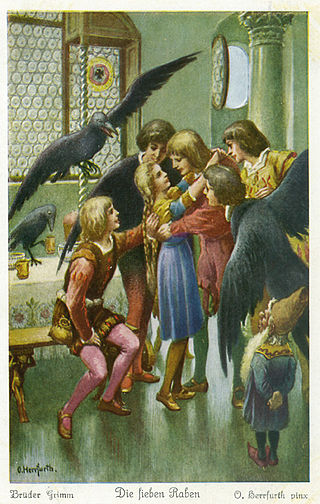
"The Seven Ravens" is a German fairy tale collected by the Brothers Grimm. It is of Aarne–Thompson type 451, commonly found throughout Europe.

"The Singing, Springing Lark", "The Singing, Soaring Lark", "The Lady and the Lion" or "Lily and the Lion" is a German fairy tale collected by the Brothers Grimm, appearing as tale no. 88.
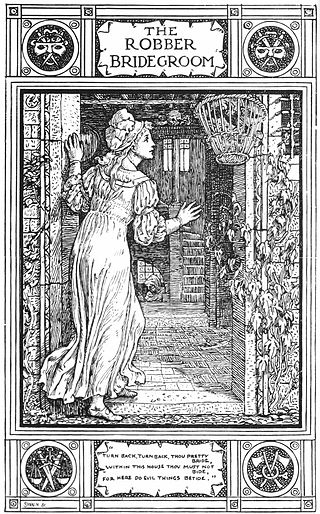
"The Robber Bridegroom" is a German fairy tale collected by the Brothers Grimm, tale number 40. Joseph Jacobs included a variant, Mr Fox, in English Fairy Tales, but the original provenance is much older; Shakespeare alludes to the Mr. Fox variant in Much Ado About Nothing, Act 1, Scene 1:
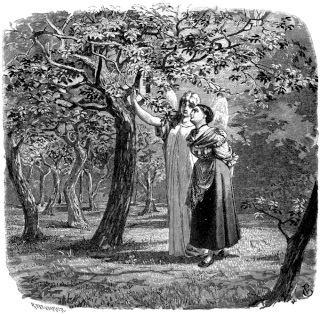
"The Girl Without Hands" or "The helpless Maiden" or "The Armless Maiden" is a German fairy tale collected by the Brothers Grimm. It is tale number 31 and was first published in the 1812 edition of Children's and Household Tales. The story was revised by the Grimm brothers over the years, and the final version was published in the 7th edition of Children's and Household Tales in 1857. It is Aarne-Thompson type 706.

Rapunzel is a children's book written and illustrated by Paul O. Zelinsky and a retelling of the fairy tale of the same name by the Brothers Grimm. Released by Dutton Press, it was the recipient of the Caldecott Medal for illustration in 1998.
The King of Love is an Italian fairy tale from Sicily collected by Giuseppe Pitre and translated into English by Thomas Frederick Crane in Italian Popular Tales.
"The True Bride" or "The True Sweetheart" is a German fairy tale collected by the Brothers Grimm in Grimm's Fairy Tales as tale 186.
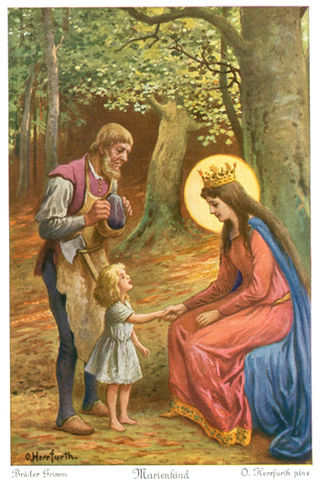
"Mary's Child" is a German fairy tale collected by the Brothers Grimm in Grimm's Fairy Tales in 1812. It is of Aarne-Thompson type 710.
"Fair Katrinelje and Pif-Paf-Poltrie" is a German fairy tale collected by the Brothers Grimm in Grimm's Fairy Tales as tale 131. A nonsense tale, it was introduced into the first edition as number 45 of the second volume.
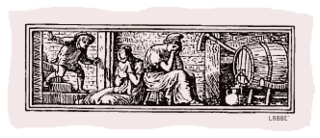
"Clever Elsie" is a German fairy tale by the Brothers Grimm. In the original 1812 edition, story #32 was called Hanses Trine. It was removed after the first edition and replaced by Die Kluge Elise in the 2nd edition.
Banggwijaengi myeoneuri is an orally transmitted Korean folk tale.
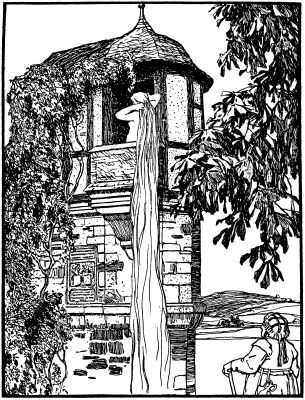
"Persinette" is a French literary fairy tale, written by Charlotte-Rose de Caumont de La Force, published in the 1698 book Les Contes des Contes. It is Aarne–Thompson type 310, The Maiden in the Tower, and a significant influence on the German fairy tale of "Rapunzel".
Prince Wolf is a Danish fairy tale collected by Svend Grundtvig in his book Danske Folkeaeventyr. It is related to the international cycle of the Animal as Bridegroom or The Search for the Lost Husband. Tales with similar motifs and elements are found across Denmark and Scandinavia.
The Golden Root or The Golden Trunk is a literary fairy tale written by Giambattista Basile in the Pentamerone, as the fourth story of the fifth day. It is considered to be one of two rewritings of the Graeco-Roman myth of "Cupid and Psyche" by Basile, the other being "Lo Catenaccio".
The Man and the Girl at the Underground Mansion is a Danish folktale collected by theologue Nikolaj Christensen in the 19th century, but published in the 20th century by Danish folklorist Laurits Bodker.
References
- ↑ Jacob and Wilhelm Grimm, Household Tales, "Frederick and Catherine" Archived 2019-12-29 at the Wayback Machine
- ↑ D.L. Ashliman, "The Grimm Brothers' Children's and Household Tales (Grimms' Fairy Tales)"